Originally published in the 1991 Road & Track Ferrari Special.
Suspicion in Maranello is that, with no automatic transmission in the Ferrari line, the market for Ferraris may be limited. Not that it should matter, some say. Those who can’t use three pedals and a shift lever aren’t Ferrari people anyway.
Nevertheless, the solution proposed, and one which may be in production Mondials as soon as late 1991, is the Valeo electronic clutch. To the drivers right is the traditional black plastic ball atop the traditional chromed shift lever that protrudes from the traditional chromed gate. But in the foot well are only two petals, throttle and brake. One simply moves the lever into first gear, presses the pedal and goes. When it’s time to shift up, move the lever up and over one in the second, lifting off the throttle but leaving the left foot on the dead pedal. And repeat on through fifth. Downshift is necessary in a similar manner.
There’s no clutch pedal because that’s all done electronically. The Valeo system superficially resembles the Sportomatic system offered by Porsche and Volkswagen in the early 70s to no great critical acclaim or commercial success. However, the Sportomatic declutched when hand pressure on the shift knob made an electrical contact, which is about as sophisticated as a light switch. The Valeo electronic clutch, however, benefits from 20 years of technological growth and particularly from the microchip. The Valeo electronic clutch is simply that, a clutch.
The transverse five-speed of the Mondale t remains intact, all the way down to the gear ratios. But the Valeo system uses an electric servo unit in place of muscle power to engage and release the clutch (a single disk instead of the normal double disc), controlled by a sophisticated microprocessor, better, Valeo says, that is humanly possible. Input includes engine RPM, throttle position, transmission input and output shaft speeds, and “intent to shift sensor” (a push or pull on the gearshift closes a contact), release bearing position and shifter position (in and between gears). Not only does it react to the immediate input, but also remembers previous activity and stirs that into the computational mix. The system adapts not only to the driver but to the driver’s actions at the time. Clutch engagement pottering about town is different from blasting through the gears.
Driving the Valeo-equipped Mondial is like driving any other Mondial, only different. Other than the missing pedal, there’s no indication of the Valeo clutch. Just put it in gear – resisting your left legs impulses – and push down the throttle pedal, just as you would an automatic. But unlike an automatic, the revs rise to maybe 1500 rpm, with no perceptible effect. The clutch then begins to engage with a distinctly mechanical sensation vaguely reminiscent of a centrifugal clutch, rather than a torque converter’s fluid feel. Also unlike an automatic, the car easily rolls backwards on an upslope and, although you can hold the car in place with the throttle, a beeper reminds you you’re slipping the clutch to do so. You’ll be similarly beeped if you try to start in third gear.
Because it still has a full manual transmission, the Valeo clutch equipped car must be shifted. That’s done much as it is with a regular foot-actuated clutch, except that you don’t move your left foot. You still need to move the lever and lift off the throttle as you shift and with some degree of coordination if you expect to be at all smooth. The lever is decidedly stiff going into gears, even more so than other Ferraris, particularly after restarting the car and the electronics are “relearning.”
Back off on the throttle and the clutch remains engaged, giving you full engine braking, even to the point of jerking if you downshift without feathering the throttle. Just like a regular manual transmission. The clutch doesn’t disengage until the car is almost stopped. The Valeo clutch is a leg saver in creepy-crawly city traffic, and the rest of the Mondial works this way as well, sauntering as happily as a saddle horse. In thoroughbred mode, however, it’s even better. Not surprising, considering that the clutch was developed first for the Lancia Delta Integrale rally car.
They say you can’t beat the clutch and, sure enough, I tried and couldn’t. Driving on a winding sports-car road requires shifting as one normally would, including using the throttle to match engine speed to road speed on downshift – it will jerk if you don’t, just like in old-fashioned clutch – and lifting between gears on up shifts. Off the line, there are three options. One is to simply motor off. This invokes full engagement by 2000 rpm or so with minimal clutch slipping. The “power launch” program is actuated by tromping on the throttle with the car in first gear: It allows enough clutch slippage to keep the engine in the power band and the tire slipping about 15 percent.
To put drama in your departure (this contradicts everything that he taught you about not abusing equipment), rev the engine to 6500 RPM with the gear level in Neutral, and then pull it back into first. The engine comes up against redlined as the car lunges forward, trailing a dohc V-8 snarl and a pair of black stripes in a gentle S-pattern on the pavement. The Ferrari folks say it won’t hurt the equipment, and it does impress your Goodyear dealer, but the power launch is faster. Valeo spokesman Claude Mehnert claims that it’s also 0.2 – 0.3 seconds quicker in the quarter-mile in the typical driver is with the standard clutch, thanks to a faster launch. Valeo also asserts improved fuel economy.
The Valeo clutch is so remarkable that it’s almost possible to overlook features the Mondial already has. For example, the transverse transmission, which allows the engine to be lower, significantly improving the center of gravity. The Mondial is exceptionally well balanced and in long cloverleaf-type sweepers its attitude can be set with 300 available horses as well as the subtly power-assisted rack-and-pinion steering. Additionally, the shock absorbers adjust in three steps from soft to firm, the latter preferable for just about everything but broken and potholed streets and loopy concrete slab highways. The shocks also firm up with speed within each of the three basic settings, but “soft” begins to feel floaty at about 70 mph. The suspension is fully independent with double A-arms with anti-dive geometry. Four wheel disc brakes have aluminum calipers with twin cylinders and ABS.
There’s no doubt that the Mondial is a Ferrari, suffering like the merely beautiful daughter and a family of beauty queens. Available only in Cabriolet form now, the Pininfarina design has improved with age, current treniness catching up with the distinct cab-forward look of the Mondial. Actually, every panel was changed with the 1989 debut of the Mondial t; none interchange with the earlier Mondial even though the theme was maintained. With the convertible top llowered, it’s unique fabric sail panels tucked under a leather boot, buffeting is minimal even into three-figure speeds. Exhaust sounds predominate over the – pardon the cliché – turbine like whine of the engine mechanicals heard when the top is raised.
Entry is not particularly easy for either front or rear passengers, but at least the driver and front passenger will be comfortable once in. The “+2” in back have extremely limited legroom and must take comfort only from riding in a Ferrari. Most unusual is the passive restraint system, possibly the best mouse belt around. The retractors are between the rear seats, the belts connected to mice on the door sill that move forward to release the belts and back to snug them up. Which they do very well, thank you, even if it feels odd at first to have the belt over your right shoulder. But then, you’re already adjusting to the pedals offset to clear the wheel well.
Dare I say the Ferrari Mondial t Cabrio is at home on road and track? But whether the Valeo clutch will make it “more acceptable to women” is questionable. It’s a “performance” option that happens to add convenience, a boon to the autocross driver who, like the rally driver for whom the system was designed, usually has more to do than appendages to do it with. But then, how many people autocross their Mondial? On the other hand, city driving and freeway traffic jams won’t produce hyper developed left thighs.
The Valeo electronic clutch isn’t as slick and simple as the modern automatic transmission, and to be really smooth with that will require some skill. But these days, nice girls can shift for themselves. And they’ll do it faster in a Ferrari Mondial t Cabriolet with the Valeo electronic clutch.
The list price for the 1990 Ferrari Mondial t Cabriolet was $105,500. Per Road & Track, the estimated price for a Valeo clutch-equipped Mondial t would rise by only $3,000. Other assorted details: The curb weight of the Mondial t Cabriolet is 3235 lbs, and with 300 hp 3405cc V-8 plus the Valeo clutch, 0-60 mph per R&T testing was 6.8 seconds and the quarter mile came up in 15.0 seconds at 934.2 seconds.
The Valeo clutch seems like one of those proposed features that never reaches production, but Ferrari did sell about 20 Valeo-equipped Mondial t Cabrios (at least one source has it at 18 exactly—though you know Ferrari and numbers), plus there was one Ferrari F40 with the Valeo clutch made for Fiat president Gianni Agnelli. For more information about the production Mondial t with the Valeo clutch, a good place to start is a FerrariChat forum conversation on the model.
Note: Photos with the article as originally published were by Leslie L. Bird.
Valeo wasn’t the only manufacturer working on an electronic clutch. I also had the opportunity to test a Ruf Porsche Carrera 4 Turbo with the Fichtel & Sachs EHKS electronic clutch for AutoWeek.





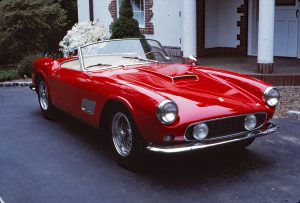
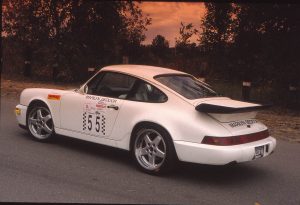
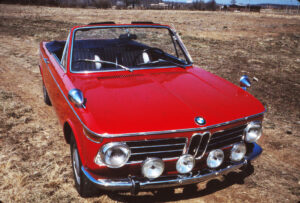
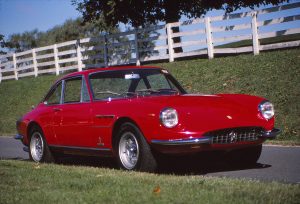


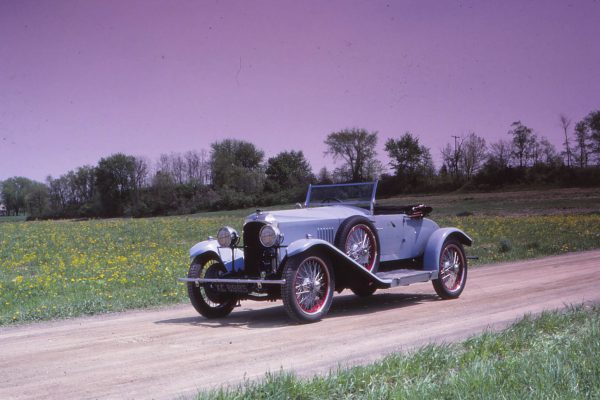
What Do You Think?
You must be logged in to post a comment.